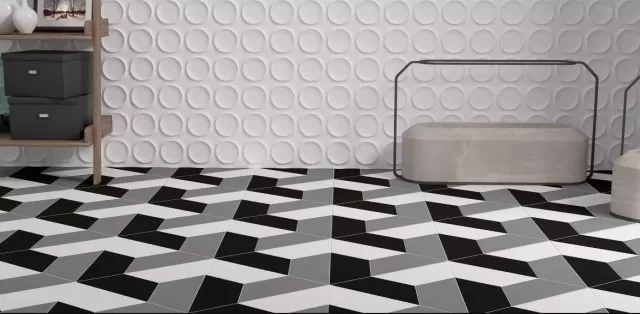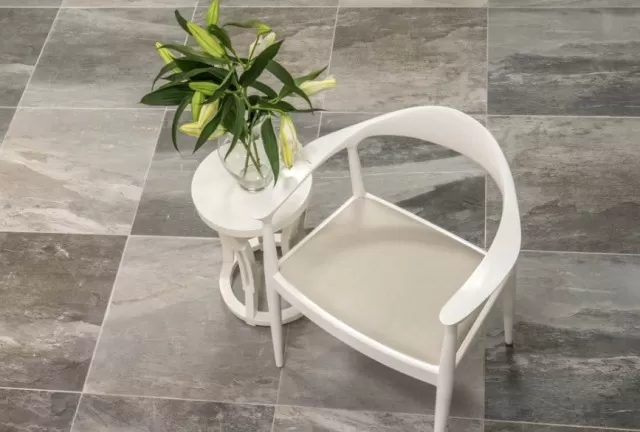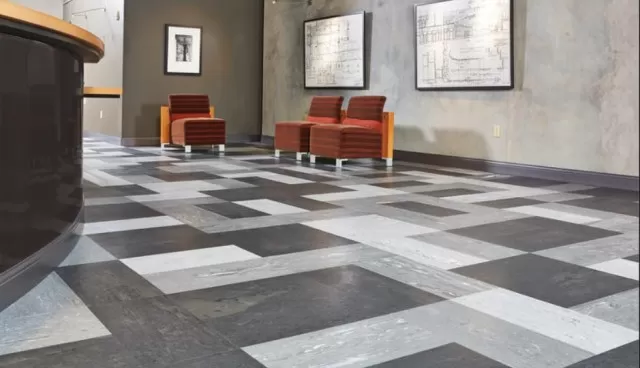When it comes to cleaning tile floors of all types, it’s important to understand that different types of tile may require different cleaning methods.
Clean Tile Floors of All Types

Here are some general guidelines to keep in mind:
Identify the type of tile: Determine the type of tile you have, such as ceramic, porcelain, slate, marble, granite, limestone, or any other specific material.
Read manufacturer’s instructions:
Check the manufacturer’s instructions or guidelines for cleaning and maintenance specific to your tile type.
This information can provide valuable insights and recommendations.
Regular sweeping or vacuuming:
Regardless of the tile type, regular sweeping or vacuuming is essential to remove loose debris, dirt, and dust from the surface.
Choose the appropriate cleaner:
Select a cleaner that is suitable for your specific tile type.
Many tiles can be effectively cleaned with mild detergents or tile-specific cleaners. However, certain tile materials may require specialized cleaners to avoid damage.
Test in an inconspicuous area:
Before using any new cleaner or method, it’s recommended to test it in a small, inconspicuous area to ensure it doesn’t cause any adverse effects or discoloration.
Follow proper cleaning techniques:
Use a mop, rag, or appropriate cleaning tool to apply the cleaner to the tile surface.
Follow the recommended instructions for dilution, if applicable. Avoid using excessive water, as it can seep into grout lines or penetrate porous tiles.
Address stains and spills promptly:
Treat stains and spills as soon as possible to prevent them from setting in.
Use appropriate cleaners or stain-removal methods recommended for your specific tile type.
Protect the grout:
Pay attention to the grout lines between tiles.
Clean them regularly using mild cleaners and a soft brush to prevent the buildup of dirt and grime.
Dry the floors properly:
After cleaning, ensure that the tile floors are thoroughly dried to prevent water spots or damage.
Use a clean, lint-free cloth or allow sufficient air circulation to aid in drying.
Seek professional assistance if needed:
If you are unsure about the best cleaning methods for your specific tile type or if you encounter stubborn stains or damage, it’s advisable to consult with a professional cleaner or seek expert advice.
Remember, each type of tile may have unique cleaning requirements, so it’s essential to research and follow the appropriate care instructions to keep your tile floors looking their best.
Ceramic and Porcelain Tile Floors

If you have tile floors made of ceramic or porcelain, you can easily maintain their sparkle by following a few simple Cleaning Tips.
Here’s a step-by-step process for cleaning ceramic and porcelain tile floors:
Remove loose debris:
Regularly sweep or vacuum your tile floors to prevent them from becoming dull.
While ceramic tiles are resistant to dirt, sand, and grit can cause the glazed surfaces to lose their shine.
Select the right mop:
Opt for a rag or chamois-type mop instead of a sponge mop when cleaning tile floors.
Sponge mops tend to push dirty water into the grout lines, making them harder to clean. Use mild detergent and Clean Water to mop the tile surfaces.
Address tile stains:
If you notice any discoloration on the tiles, try to identify the cause of the stain.
Then, use an appropriate cleaner specifically designed for that type of stain to ensure effective cleaning.
Be cautious of soap residue: In case your tiles appear hazy after cleaning, it may be due to soapy residue.
Use a nonabrasive all-purpose cleaner to remove the film. Alternatively, you can create a homemade cleaner using mild acid, such as fresh lemon juice, but be cautious and avoid using this on stone tiles.
Dry the tiles:
Avoid letting your glazed tile floors air-dry, as it can lead to water spots.
Instead, immediately dry the floor with a clean, lint-free cloth after washing. For an easier approach, you can use your foot to slide the cloth over the floor and dry it.
Editor’s Tip:
To save your knees from discomfort, try using your foot to slide the cloth across the floor while drying the tiles.
By following these guidelines, you can effectively clean and maintain the appearance of your ceramic and porcelain tile floors.
Stone Tile Floors

When it comes to cleaning tile floors made of natural stone, such as slate, granite, or marble, it’s important to exercise caution.
Traditional cleaners containing harsh substances can potentially damage the surface of these materials. Instead, opt for cleaners specifically designed for natural stone.
Here are some guidelines for cleaning different types of stone tile:
Slate Tile:
Mild detergents can be used on slate tiles, as long as they are free of acidic properties like lemon or vinegar.
If your slate tile has a protective coating, ensure that you promptly dry the tile with a soft towel to prevent water spots.
Marble Tile:
Marble tiles are visually appealing but require high maintenance.
It’s crucial to avoid cleaning marble with products that have an acidic pH level. Cleaners containing lemon or vinegar should be avoided as they can cause etching on the tile’s surface.
Additionally, steer clear of brushes with tough bristles or scouring powders that could potentially scratch the marble.
Granite Tile:
For cleaning granite tile, use a mild pH-neutral detergent similar to what you would use for slate and marble.
Harsh cleaners can leave streaks or cause discoloration on the tile. If you have polished granite floors, you may consider buffing them to maintain their shine and cleanliness.
Remember, always follow the specific instructions provided by the manufacturer of your stone tile or consult with a professional if you have any doubts about the appropriate cleaning methods.
Resilient Tile Floors

If you have resilient tile floors made of materials such as linoleum, vinyl, cork, or rubber, you’ve chosen a low-maintenance and comfortable option.
When it comes to cleaning your resilient tile floors, keep the following suggestions in mind.
Vinyl Tile:
This highly durable flooring can be easily maintained.
Begin by sweeping or vacuuming to remove debris, and then mop the floor using a vinyl cleaning solution or a mixture of water and vinegar. Avoid using abrasive cleaners or scrubbing tools on vinyl to prevent surface scratching.
Linoleum Tile:
Often mistaken for Vinyl Flooring, linoleum has specific cleaning requirements.
Start by sweeping or vacuuming the floor to eliminate dirt and dust. Then, wash the linoleum tile with a cleaning solution specifically formulated for linoleum floors or a borax detergent combined with water.
Thoroughly rinse the floor and allow it to dry. To safeguard your linoleum floors, apply a coat of wax or liquid wax every 3 to 6 months, and buff it to achieve a shiny finish.
Cork Tile:
The cleaning process for cork tile floors depends on the type of finish they have.
If your cork tiles are sealed with polyurethane (which is common), clean them using water and a mild detergent or White Vinegar, and ensure thorough rinsing. For unfinished or waxed cork, follow the cleaning instructions for a polyurethane-sealed cork but apply solid or liquid wax once the tiles are dry.
Editor’s Tip:
Avoid using a steam mop on these types of tile, as they are not designed to withstand high heat or excessive moisture.
*The information is for reference only.